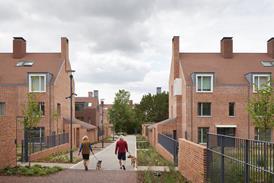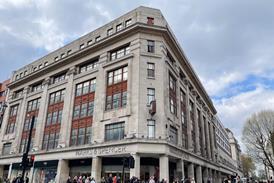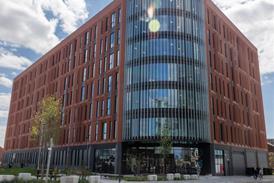- Home
 Allies and Morrison completes passivhaus student townhouses in Cambridge
Allies and Morrison completes passivhaus student townhouses in Cambridge Westminster set to adopt ‘benchmark’ retrofit-first policy and new affordable development requirements
Westminster set to adopt ‘benchmark’ retrofit-first policy and new affordable development requirements Green light for Buckley Gray Yeoman’s Shredded Wheat Factory redevelopment
Green light for Buckley Gray Yeoman’s Shredded Wheat Factory redevelopment Make-designed government office building in Blackpool to reopen tomorrow after cladding failure
Make-designed government office building in Blackpool to reopen tomorrow after cladding failure
- Intelligence for Architects
- Subscribe
- Jobs
- Events

2025 events calendar Explore now 
Keep up to date
Find out more
- Programmes
- CPD
- More from navigation items
Studying architecture requires hard sacrifices for little return. So why do it?

A campaigner against the hidden cost of studying architecture tells his own very personal story
I chose to study architecture in the United Kingdom because of the prestige of the education system, the reputation of the RIBA and a curiosity about life abroad. My family was a typical middle-class Bulgarian family, with income which in Bulgaria would be considered comfortable and in the UK, sub-standard. Nevertheless, using savings and grandparents’ goodwill I managed to secure enough finances to supposedly fund me throughout my bachelor. Little did I know about the hidden costs of an architectural course and the time-consuming tasks that would restrict my ability to earn as I learn.
It was in the summer of 2011, between my first year and my second year, that I started to worry about my financial situation. Costs were much higher than expected. Printing, model making and travel were essential parts of the course and I was starting to doubt my ability to progress. When financial worries take over, there is little space in one’s mind to prioritise creativity.
…
This content is available to registered users | Already registered?Login here
You are not currently logged in.
To continue reading this story, sign up for free guest access
Existing Subscriber? LOGIN
REGISTER for free access on selected stories and sign up for email alerts. You get:
- Up to the minute architecture news from around the UK
- Breaking, daily and weekly e-newsletters
Subscribe to Building Design and you will benefit from:

- Unlimited news
- Reviews of the latest buildings from all corners of the world
- Technical studies
- Full access to all our online archives
- PLUS you will receive a digital copy of WA100 worth over £45
Subscribe now for unlimited access.


